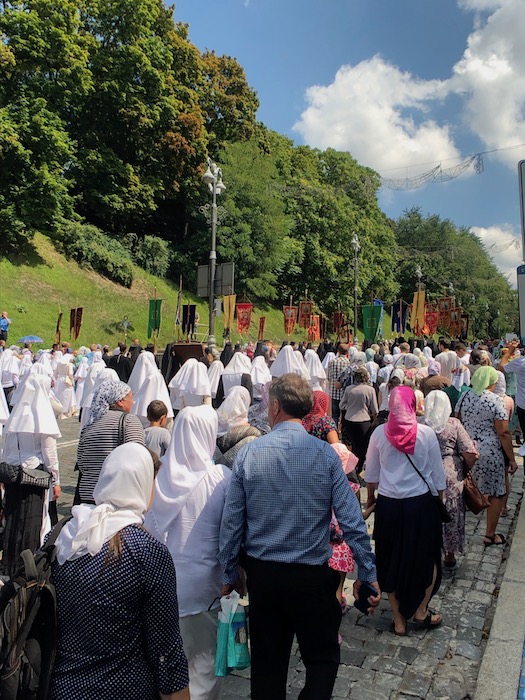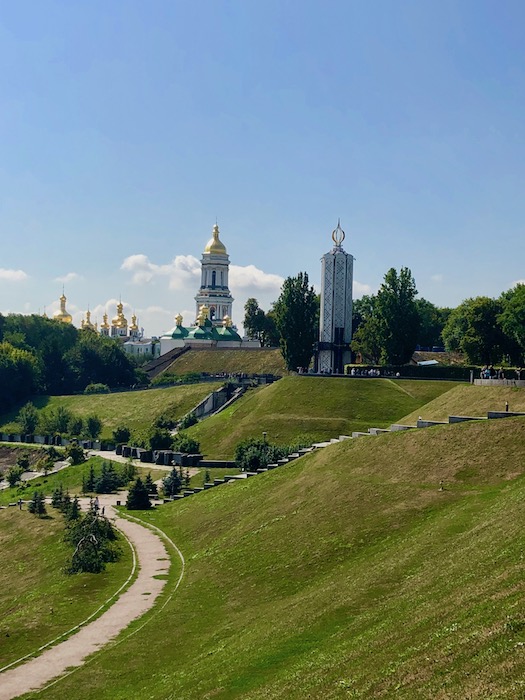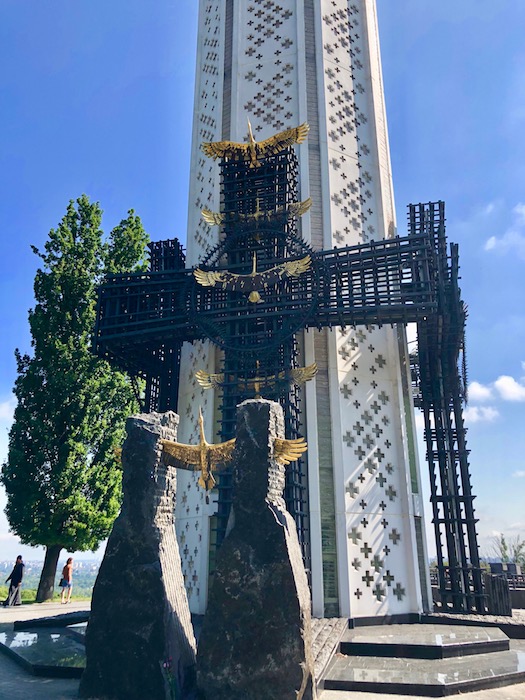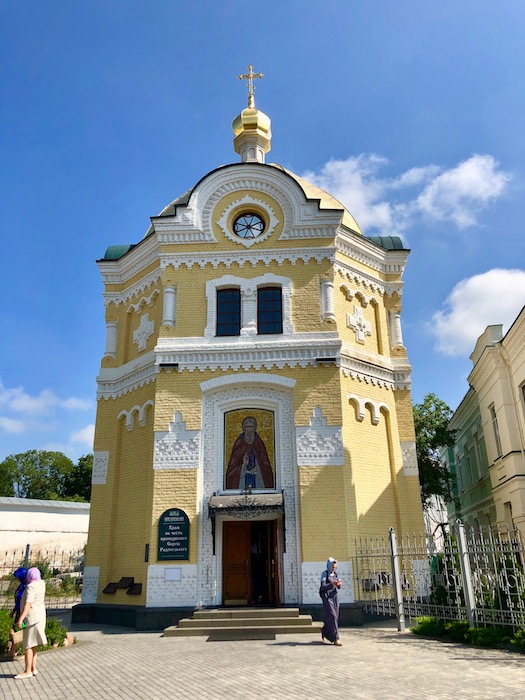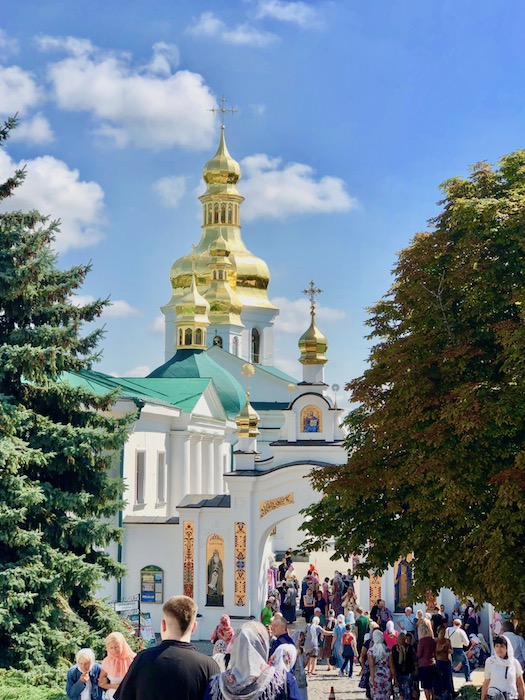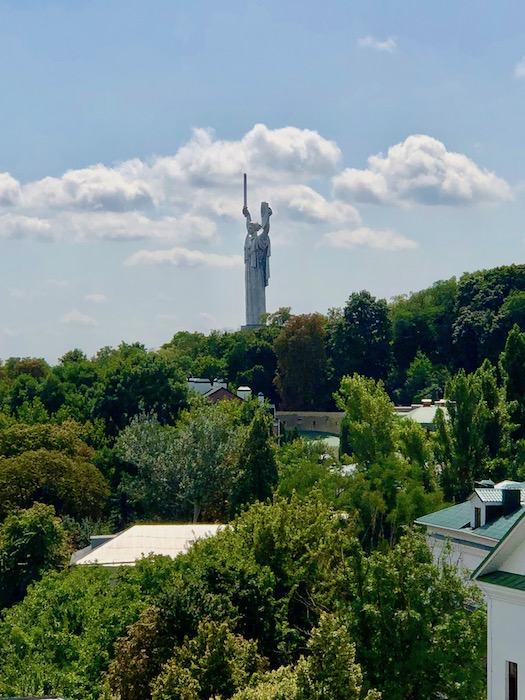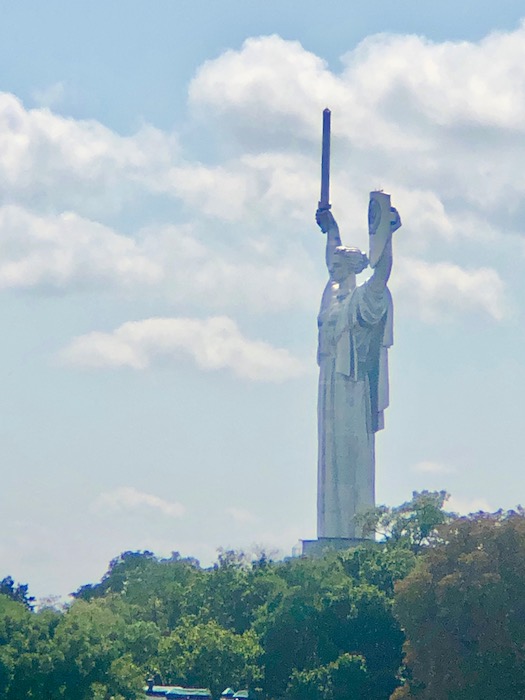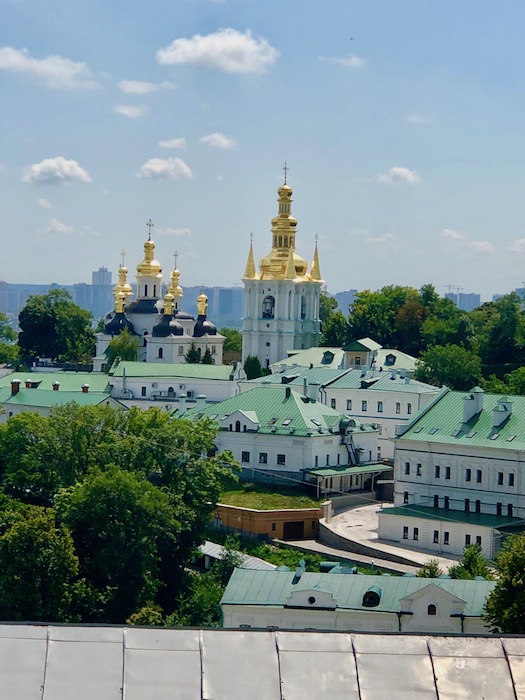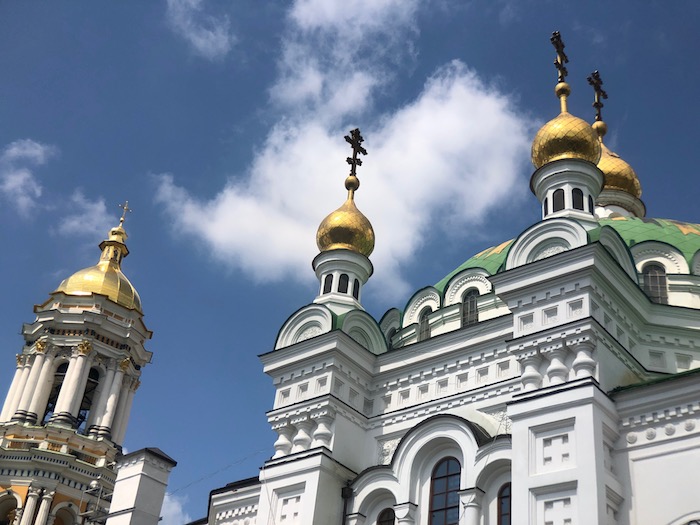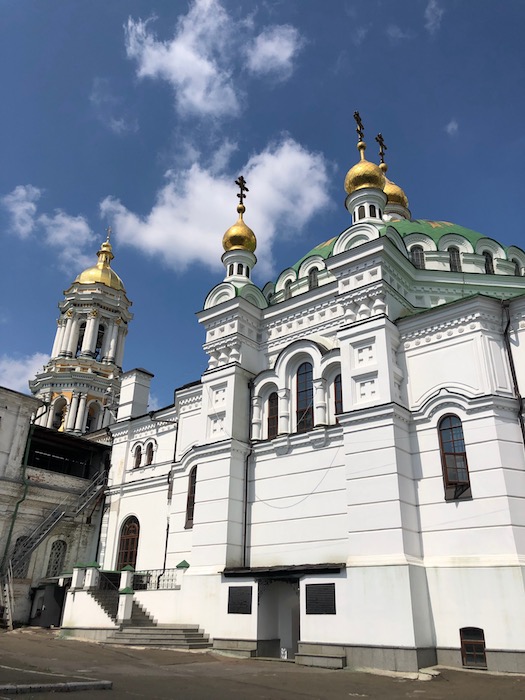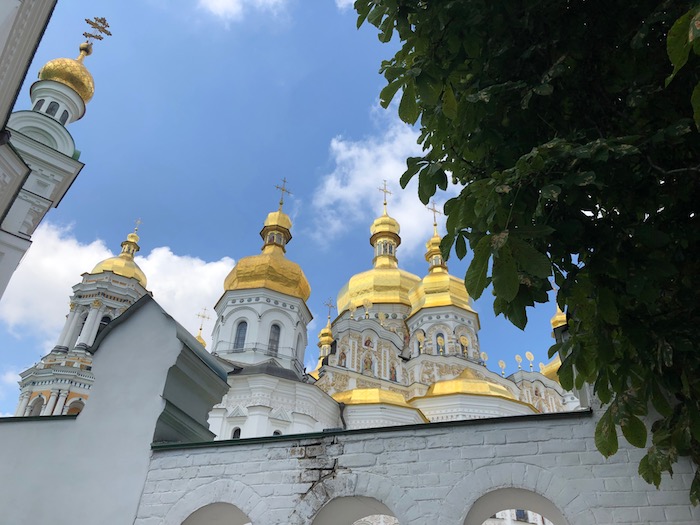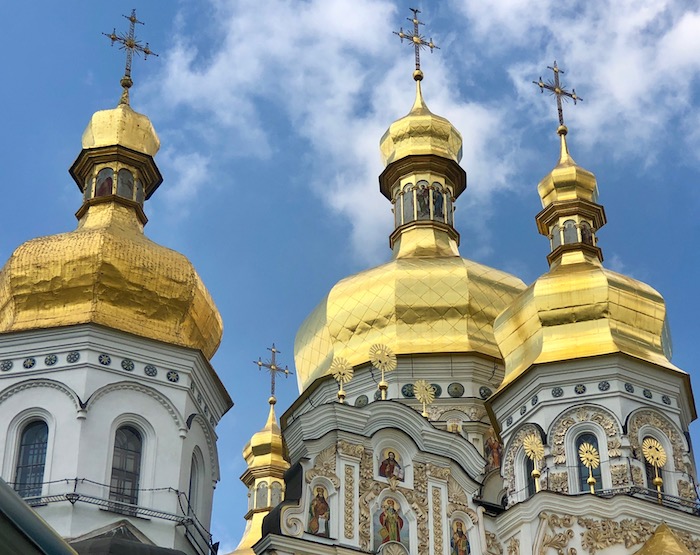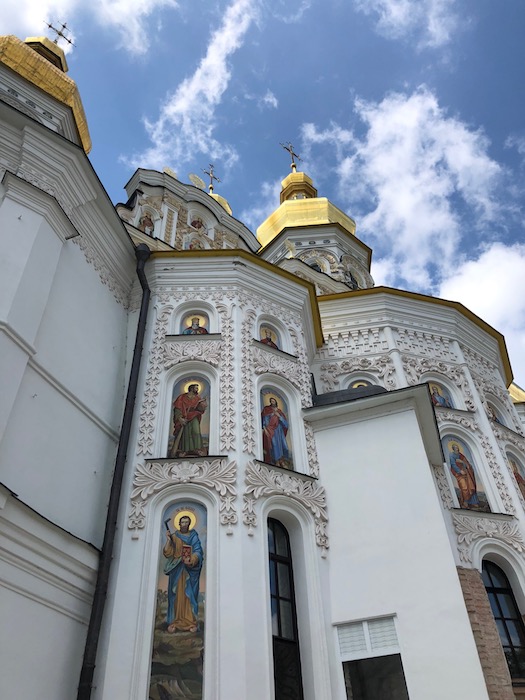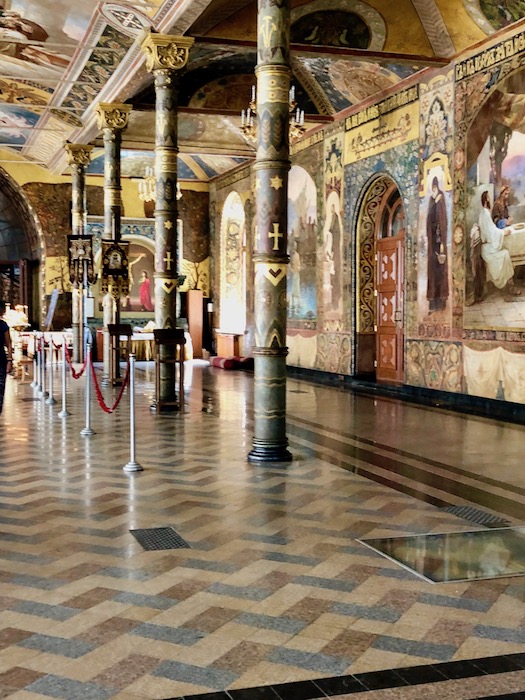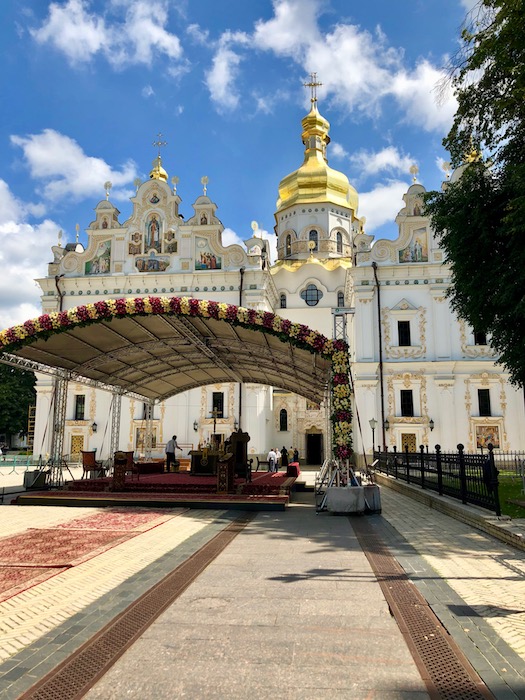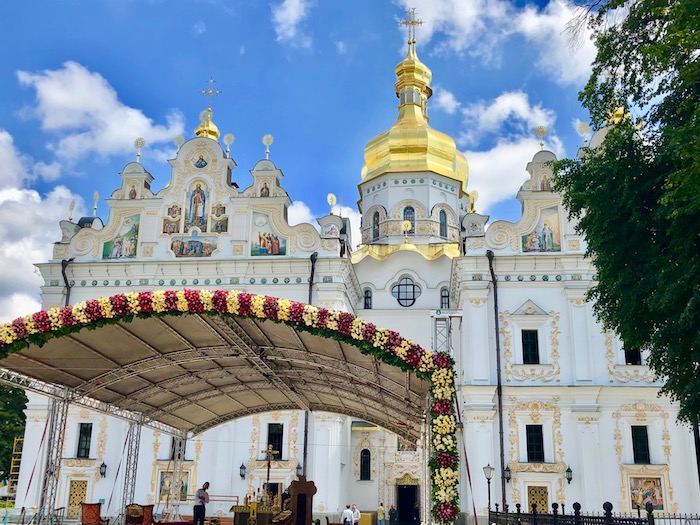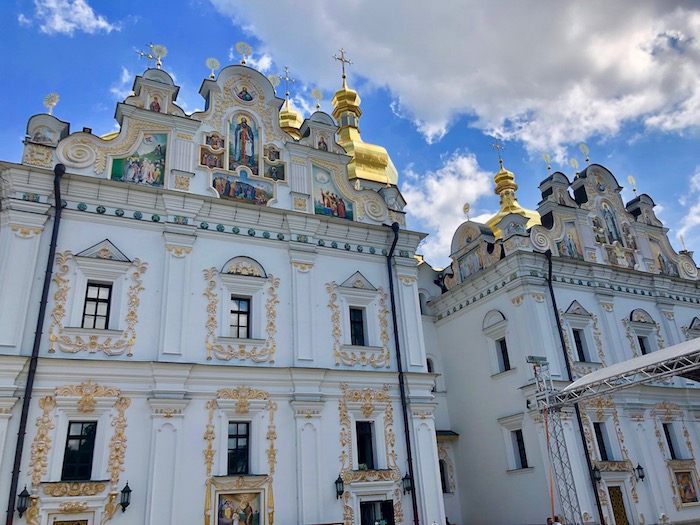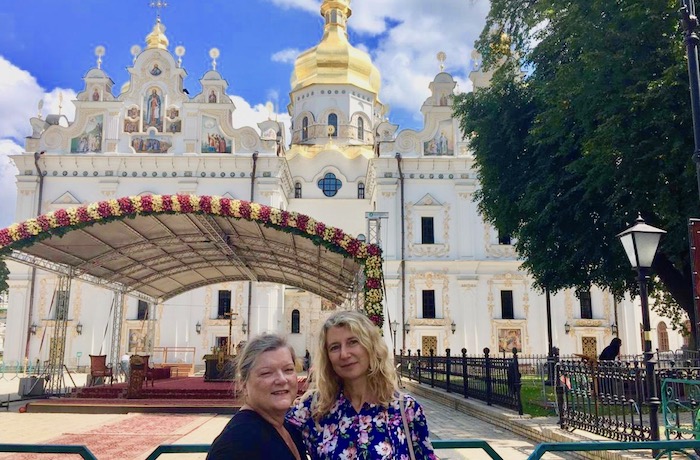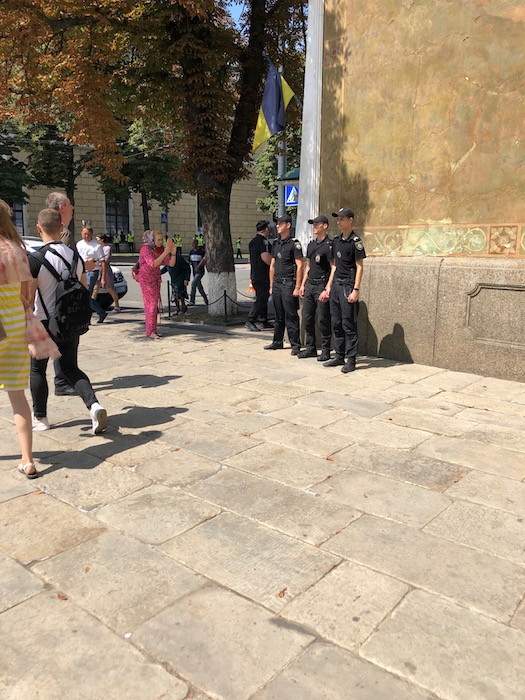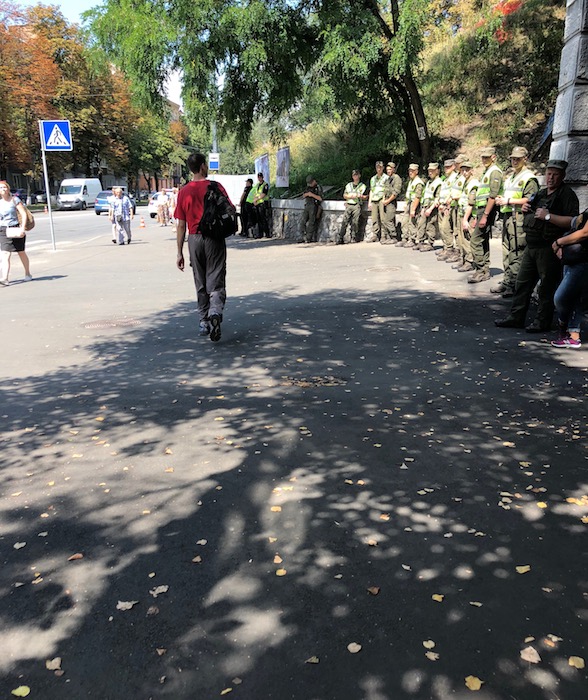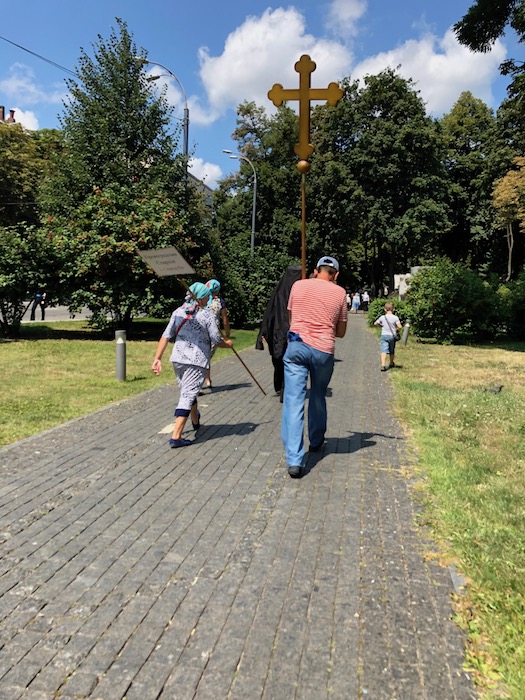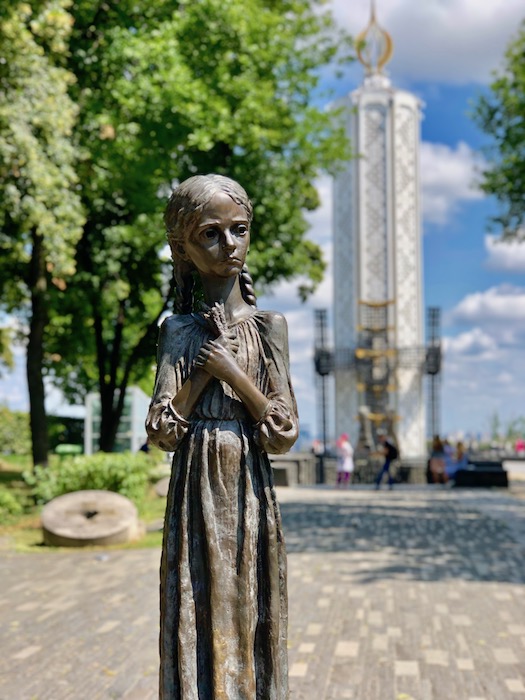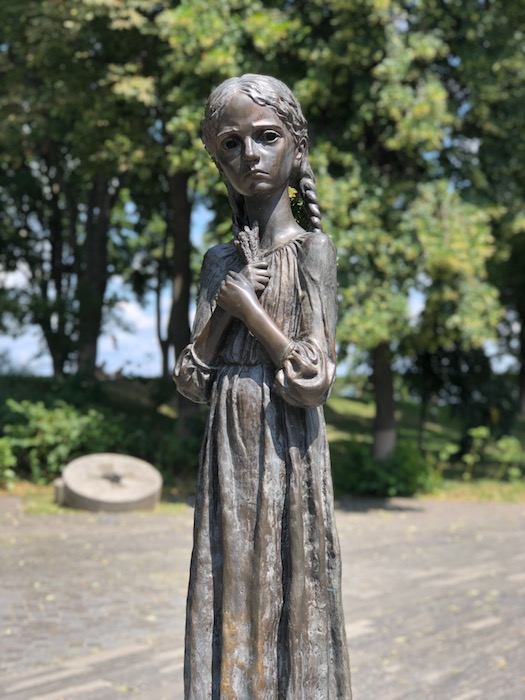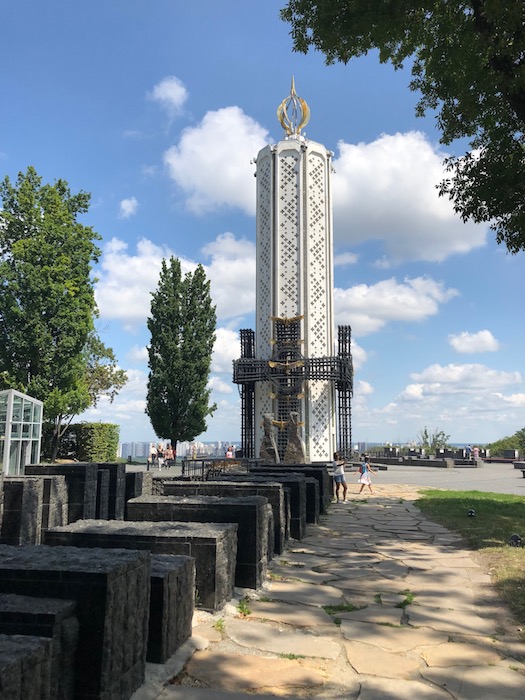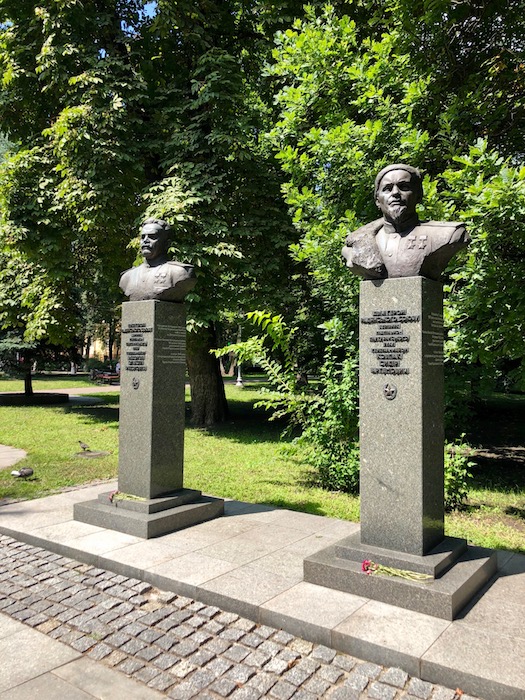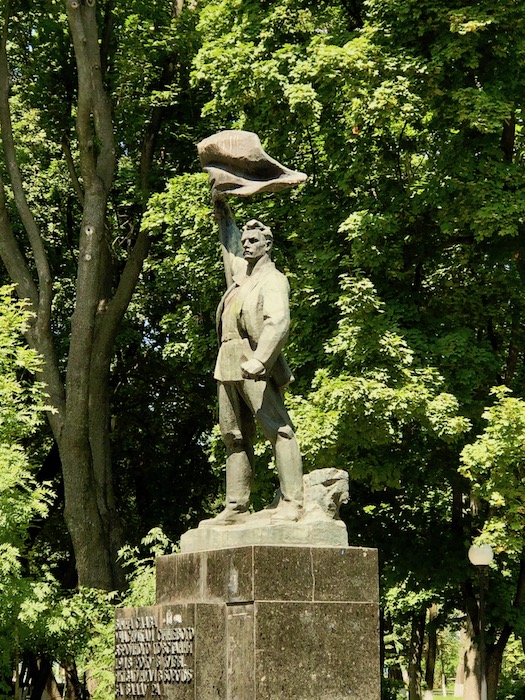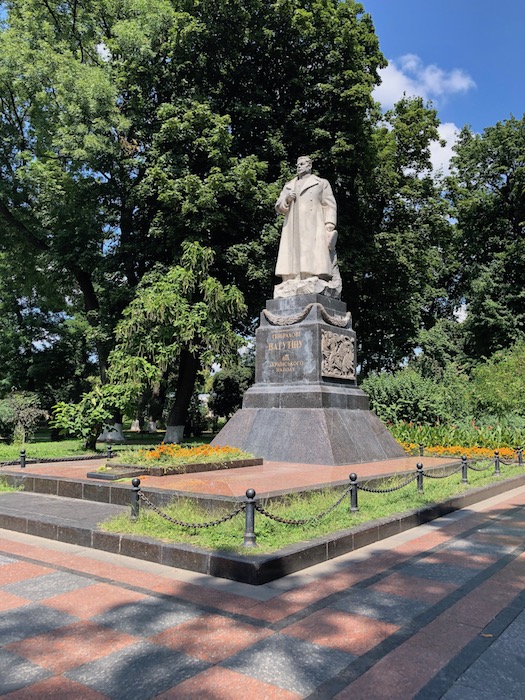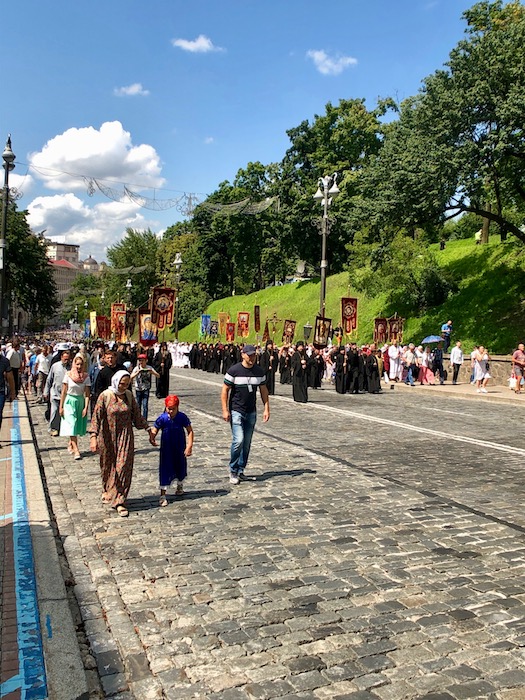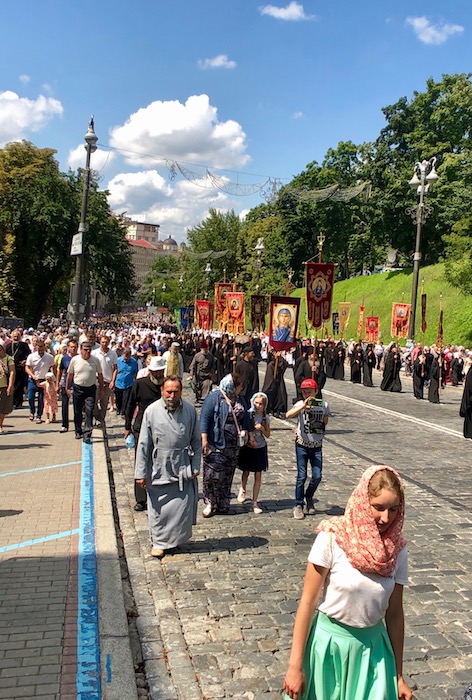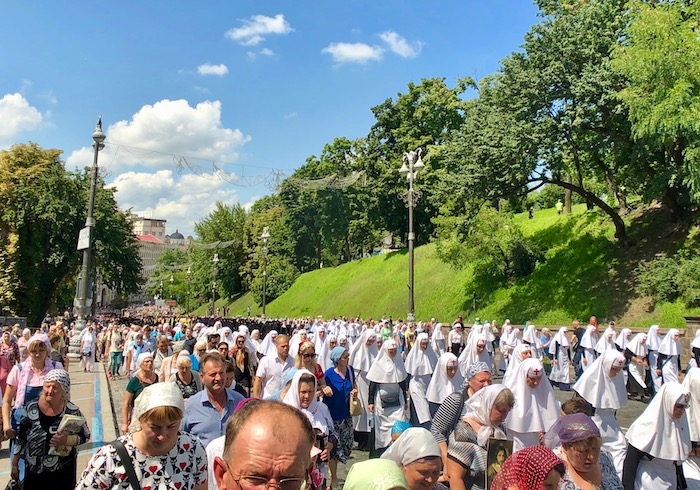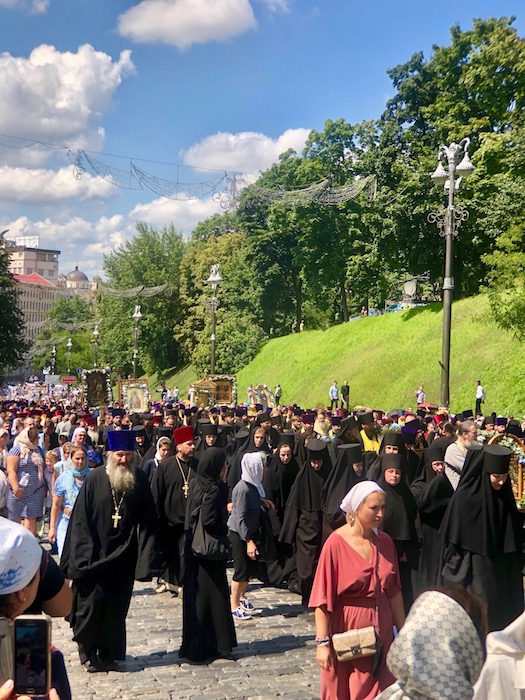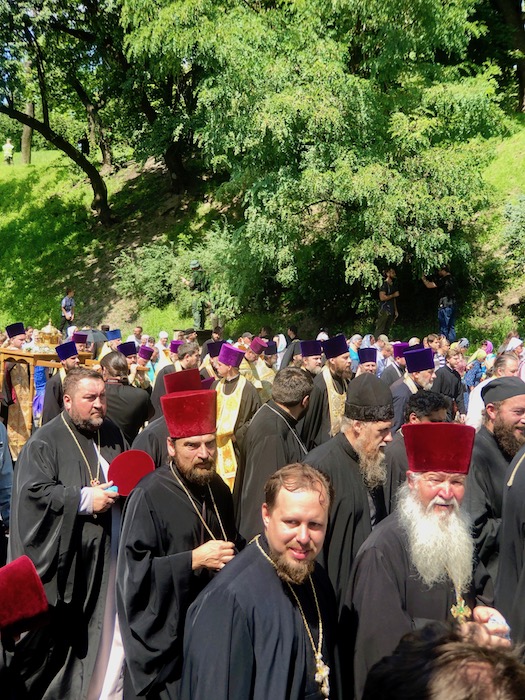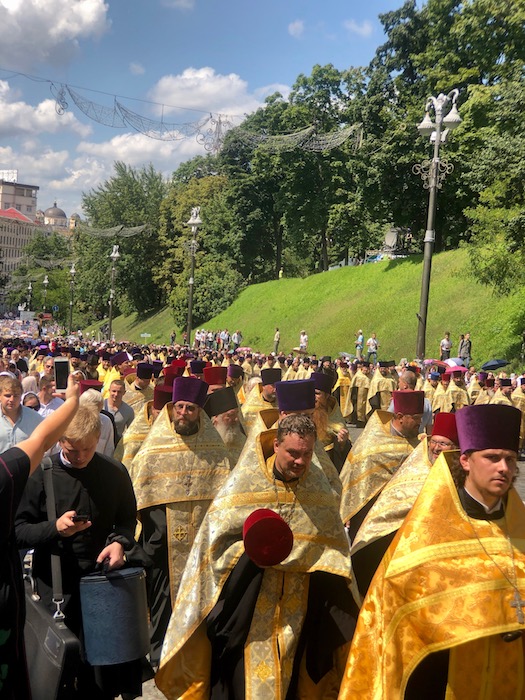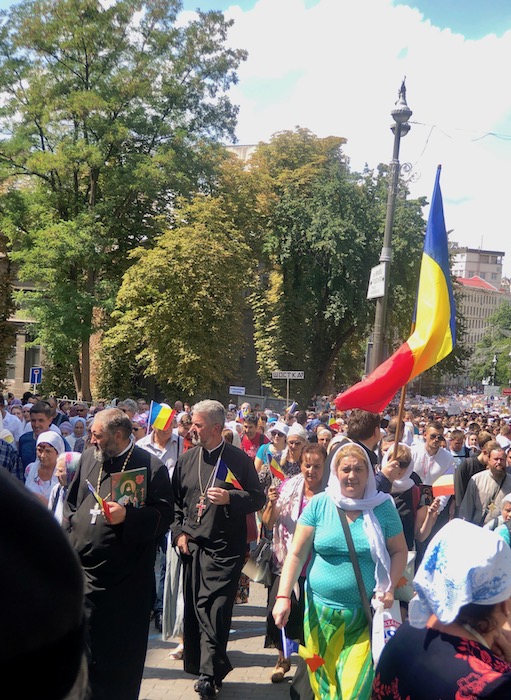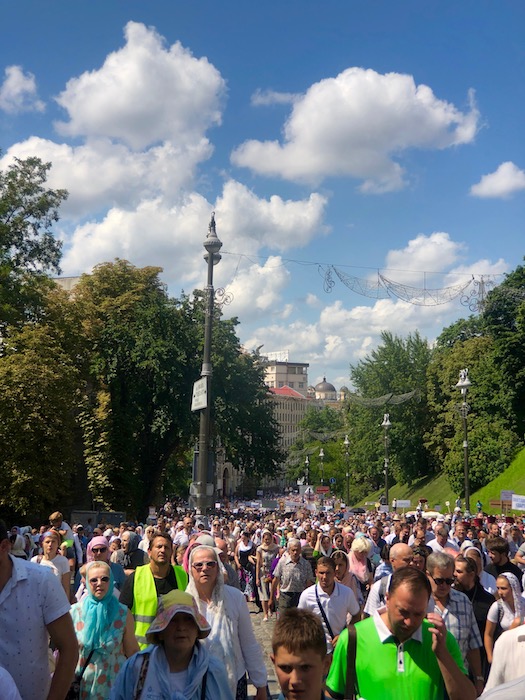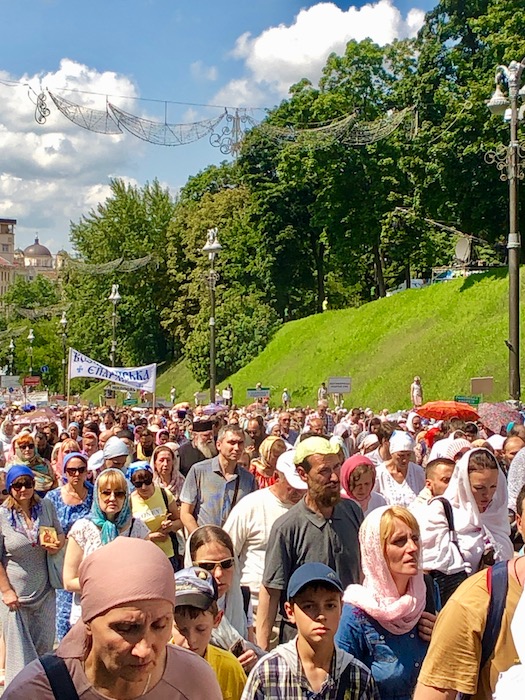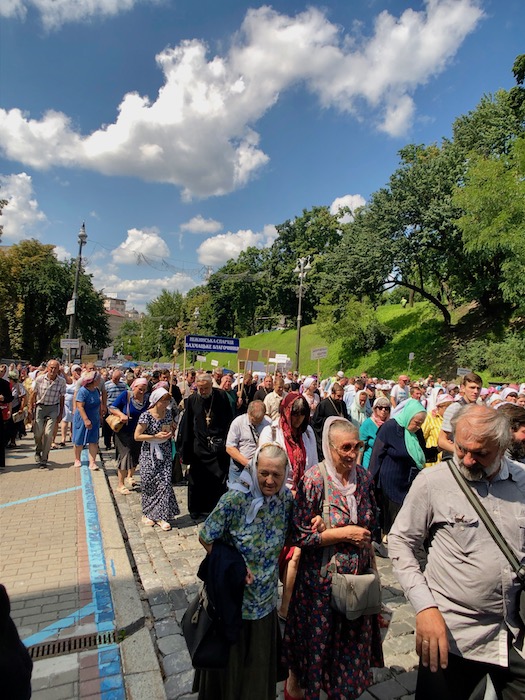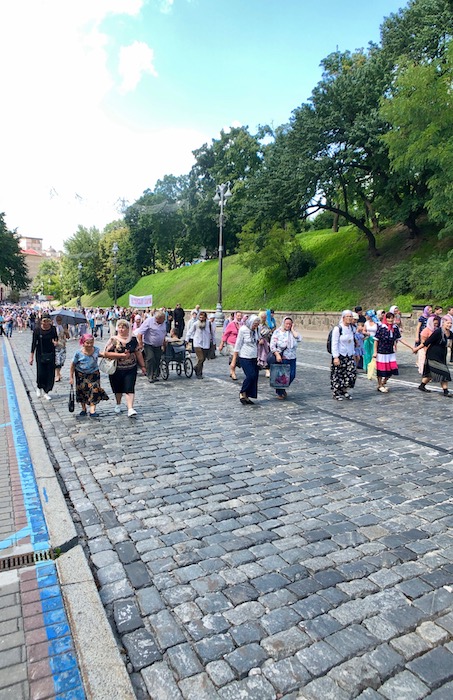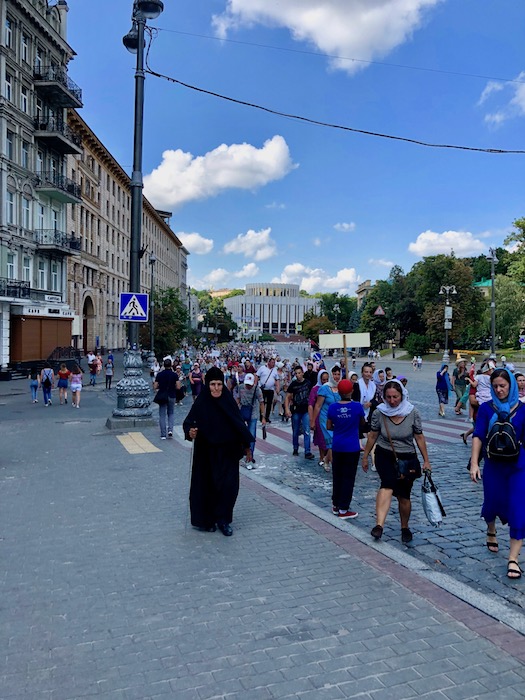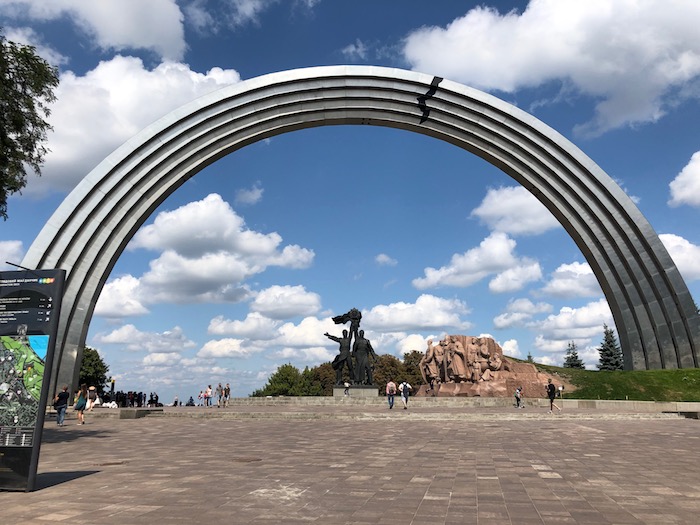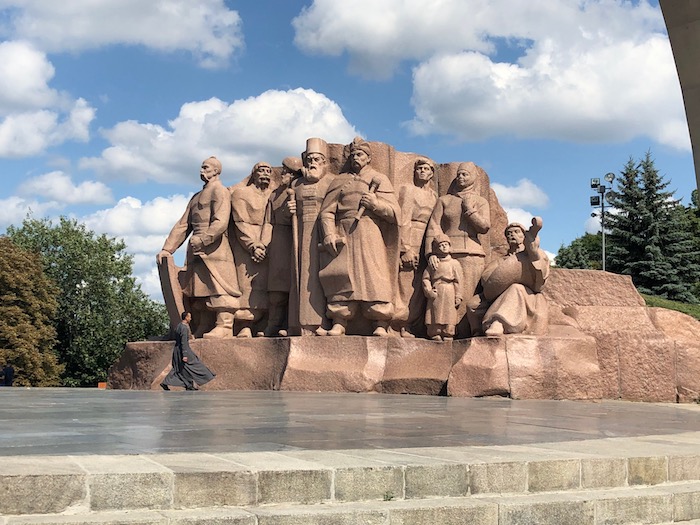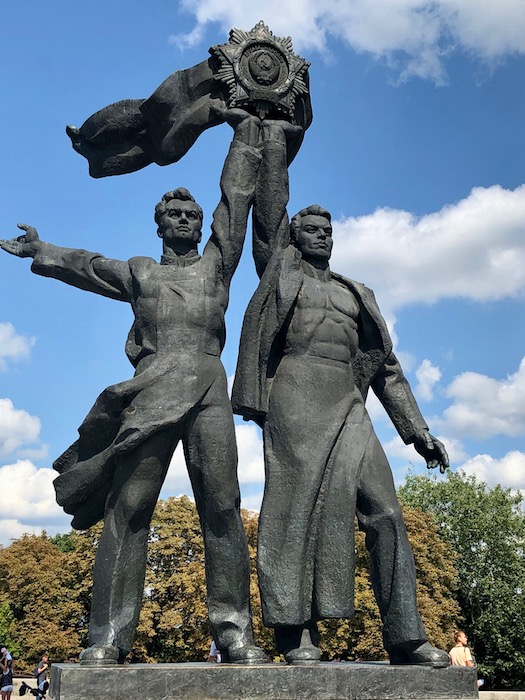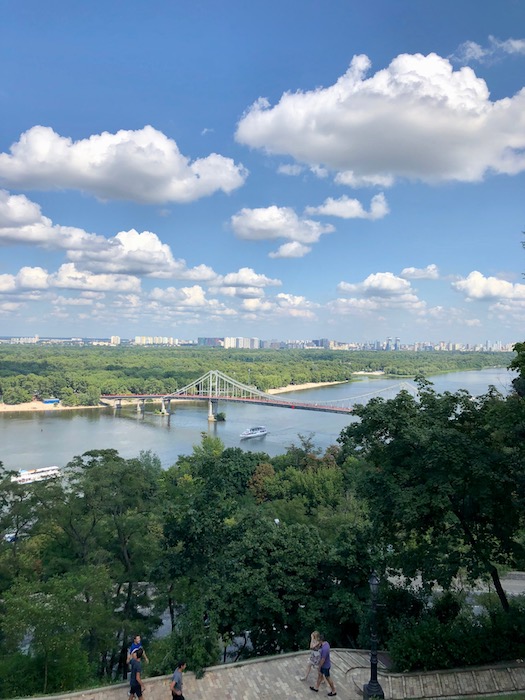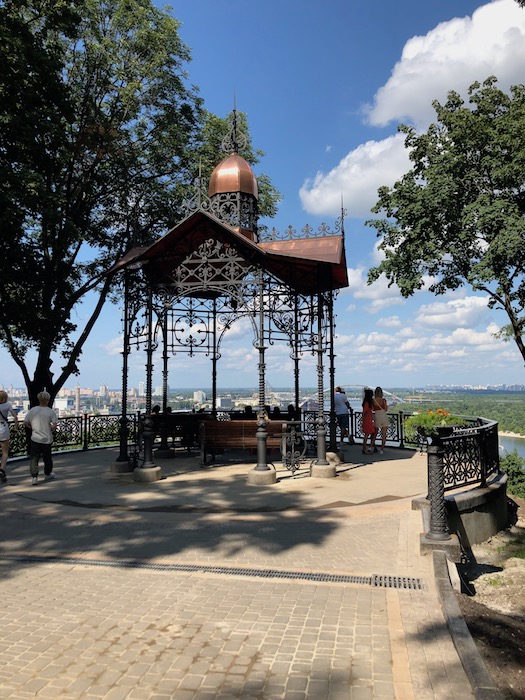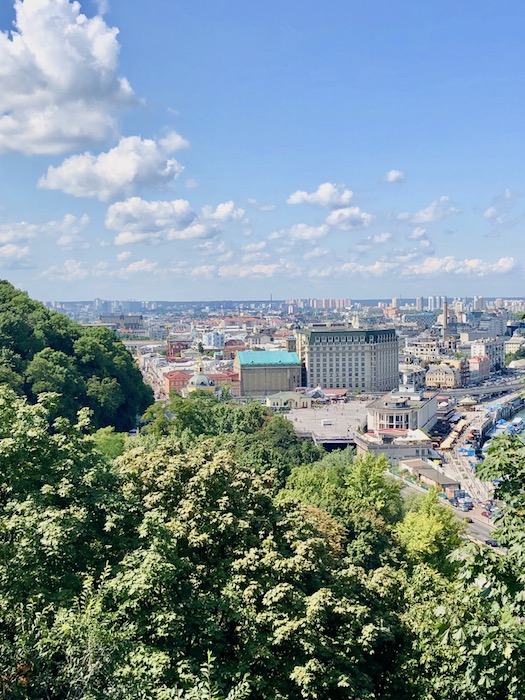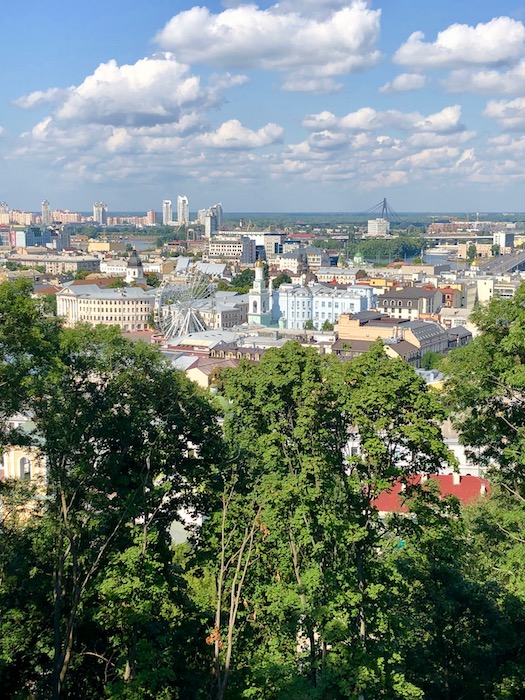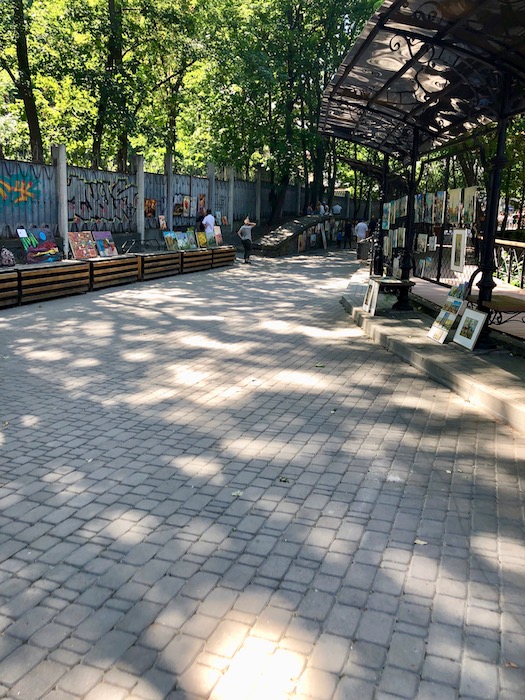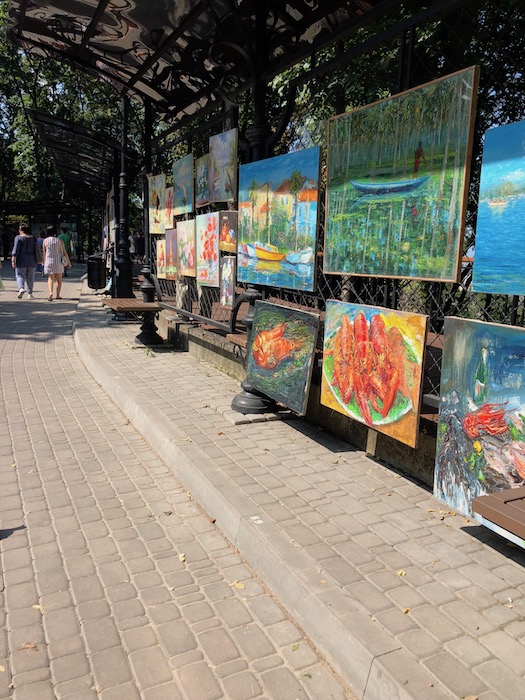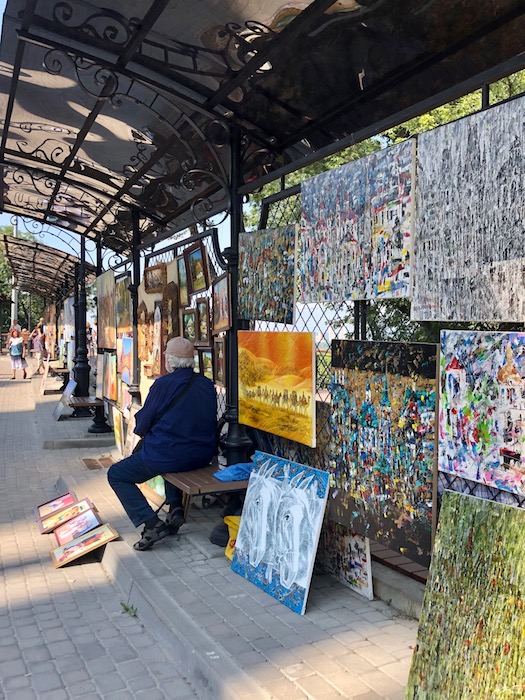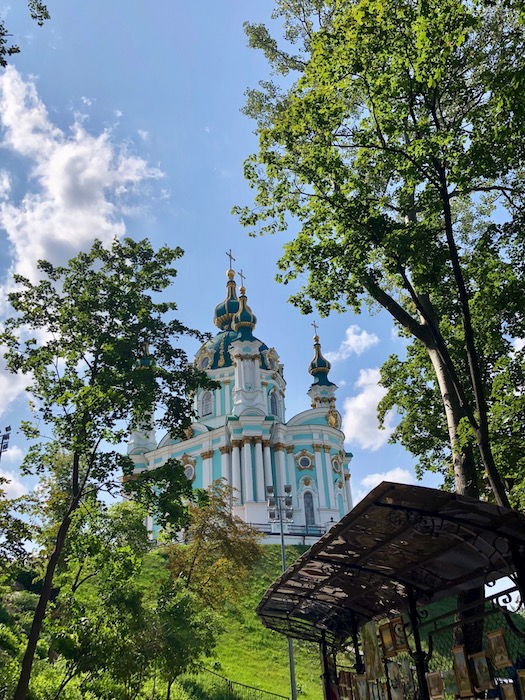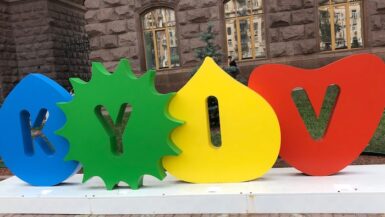July 27, 2019
When I got into my Uber this morning to go to the Arsenalna metro station to meet my guide for a tour of the Kyevo-Pecherska Lavra (monastery), my driver seemed distressed at my intended destination. He started talking in very quick, animated Ukrainian or Russian pointing repeatedly to the map on his iPhone. He kept making an X with his hands possibly indicating it wasn’t a place I should go – I wasn’t sure what he meant. He gave up with a sigh of exasperation when I said I didn’t understand and took off (with me in the car) with a squeal of tires.
He bobbed and weaved on the cobblestone streets of the old town and then the newer, smoother streets once over the hill. At one point, we came to a street where there was a line of security police blocking access. The driver turned around, looked at me and pointed to them and the map – still taking in Ukrainian or Russian. Once again, I didn’t understand and shrugged my shoulders – he sighed and took off once more, getting on the freeway and going far around the spot where we were heading (I could see it on his phone’s map). I wondered why access was blocked – was it another marathon? It seems that I arrive in major cities just about the time their marathon is taking place. Spoiler alert – it was a type of marathon, but there was no running involved.
Eventually, he screeched to a stop, pointed in front of us, and made a shooing motion indicating I needed to get out. Out on the sidewalk, I had no idea where I was or whether the metro station was nearby. I tried asking a couple of people for directions, but no one spoke any English and my Ukrainian is worse than my Russian. I entered the name of the metro station in my navigation and walked to where it said I would find it – no metro station. I tried to send a message to my guide on WhatsApp, but I had no Internet connection. Breathe; you can figure this out…
I decided to backtrack to where I was let out of the cab and walk in the general direction of where the driver pointed. A few blocks down, what did I find? The metro station and my guide Liudmila waiting for me.
As I walked up to the front of the metro station, which is supposedly one of the deepest in the world, I saw mobs of people spilling out. There were priests, nuns, women in long skirts and headscarves, and people carrying large signs indicating where the groups were from. After introducing myself to Liudmila, I asked if she knew what was happening and why there were so many people and security.

It seems I had planned my visit to the most famous and holy monastery in Ukraine on the 1031st anniversary of the Christianization of Ukraine. Today was the annual pilgrimage of Orthodox worshipers from across the country (and other parts of the world) to all the major churches and cathedrals in Kyiv, culminating in a walk from one side of Kyiv to the Lavra. Yay for my timing!
Liudmila didn’t think it was going to be a problem as we were headed to the Lavra well in advance of the final pilgrimage for the day. Let’s hope.
We decided to walk the ¾ of a mile to the Lavra instead of riding the bus because there were some great views on the way that Liudmila didn’t want me to miss. She was right. The observation deck over the city was great and had a nice long-distance view of the Lavra. There was also a really cool interactive sculpture depicting all the major churches and monasteries in the area with a dove hovering over them keeping the peace.
We passed by a monument recognizing the horrific genocides (through famine) inflicted by the Russians on the Ukrainians in the 1920s, 1930s, and 1940s. I can still hear the entrancing music that plays melodically over and over and the gold crosses on the monument symbolizing the millions of men, women, and children who died of starvation at the hands of the “motherland.” The storks symbolize rebirth. It was a poignant reminder of what humans are capable of doing to other humans in the name of greed and power.
The monastery itself is divided into the Upper Lavra and Lower Lavra. The upper half is where the churches and museums are located; the lower half is where the caves are located.
We headed for the caves.
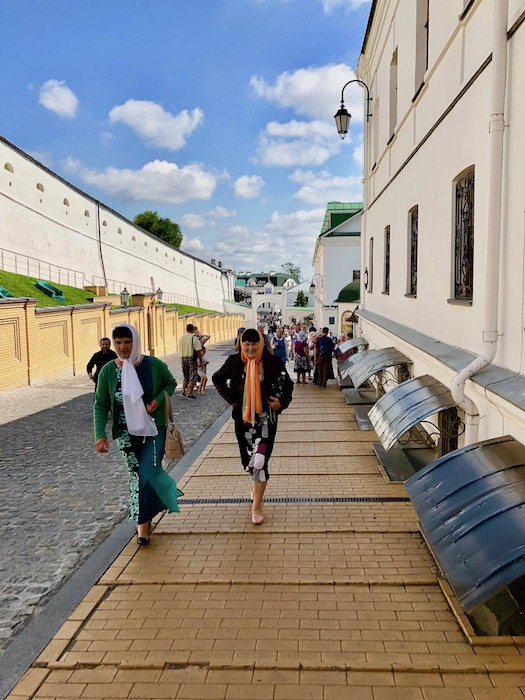
The initial cave monastery was built by Saint Antony, a monk who liked his solitude (he wasn’t a saint then). Other monks, including Saint Feodosy (also not a saint at the time), eventually joined him. Antony kept digging more cave monasteries to maintain his solitude, while his following continued to develop. Everything on site seems to be dedicated to one or the other monk.
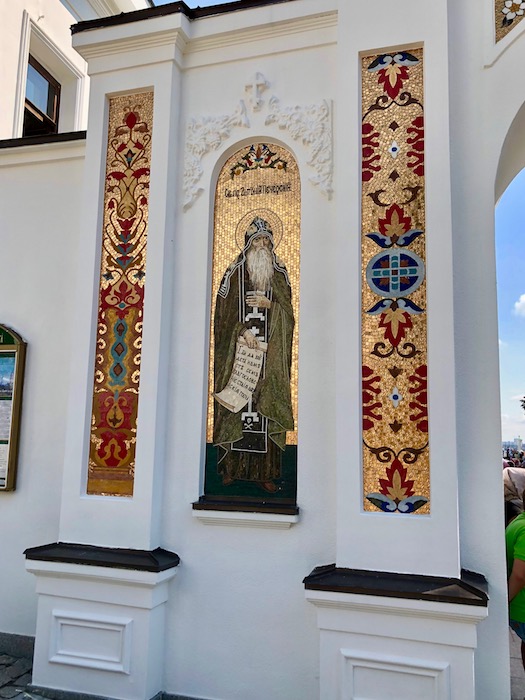
The caves are divided into the “nearer caves” and the “further caves.” We headed to the further caves hoping for less of a crowd. It appeared not everyone was heading to the churches for their pilgrimage because the line was pretty long.
While in line, Liudmila filled me in on the history of the caves and their inhabitants. Yes, there are inhabitants, none alive. Many of the monks died in the caves. If their bodies decomposed, then they were not the holiest of men. If their bodies mummified, then they were treated as saints, wrapped in fine robes and entombed in glass coffins, which are on display in the caves. Believers come to the caves to pray and kiss the coffins of the saints where one body part – a hand or foot – is exposed under the glass to show they have mummified.
As we stood in line, the woman behind me struck up a conversation because she guessed I was from the US and her father lives in New York. Additionally, the woman in front of us seemed to spontaneously take us under her wing when it came time to buy candles to get into the caves and to push our way into the line winding its way through the caves at a snail’s pace. This is not an activity for the claustrophobic or those who sweat profusely. Also, no photographs are allowed – this is strictly enforced and a rule you don’t want to break while in confined quarters far underground.
My main concern the entire time I was in the caves was not to burn myself with the dripping wax from my candle and not to light anyone else on fire. I didn’t come in contact with anyone else, but I saw a few close calls – I’m not sure other people understood how fast polyester shirts could burn and go up in flames. Meanwhile, the line moved very slowly as each person paid his/her respects to each mummified saint and each icon as the soggy air around us became heavier and sweatier. And then, there was light at the end of the tunnel, a cool breeze, and we were through the “further caves.” We decided that we didn’t need to recreate the experience, opting out of visiting the “nearer caves.”
Back up the long cobblestone street, we went to the upper Lavra. Liudmila pointed out the best areas for photographs, provided me with interesting commentary on the history and politics associated with the site, and kept me thoroughly entertained. She was delightful company and a great tour guide.
She pointed out a church off to the side of the Cathedral, which she said was one of her favorites – for the life of me, I can’t remember the name of the church. At one point in time, the Russians removed the roof from a portion of the building and a lot of treasures were destroyed. It appeared that the church was getting ready for a wedding or some type of reception (maybe having to do with the pilgrimage) and there was a guard at the door. Liudmila told the guard that I had come a long way and only had a short time to visit, so wouldn’t he let us in for just a quick look – please! After a few moments of consideration, he ushered us in quickly. We only got to stand at the far end for photos, but it was spectacular inside.
The exterior of the Dormition Cathedral is gorgeous with its seven gleaming domes. Since the original church was blown up in WWII, this is a 21st-century replica. Originally it was Byzantine architecture and changed to Baroque – or was it the other way around; I can never remember. Anyway, it is a sight to see. Unfortunately, the exterior was all we could see because the church was closed for the day due to the mass that was going to take place in the courtyard immediately in front of the church’s front door. There was no way we were talking our way past these guards. I guess I’ll just have to return on a later trip.
Exiting the monastery, we passed through the Trinity Gate, which houses the Trinity Gate Church. Liudmila said that there are some fantastic frescoes in the church; unfortunately, it is under renovation. Another church interior missed and saved for another trip.

After saying goodbye to Liudmila and thanking her for the tour, I began the long walk back to the hostel. I was confident I would be safe as there was security, police, and even soldiers stationed everywhere.
Several of the pilgrims headed in the same direction as me, which didn’t make any sense at the time as I thought they should be heading for the Lavra.
My walk took me past the Genocide Monument once again, but from a different side. There was a statue of a little girl suffering from starvation that moved me. I’m still haunted by what that monument represents.
A portion of the sidewalk was blocked by security. I detoured through a lovely park with several statues. Ukrainians love statues and monuments.
Once back on the street, I was met with a line of security and a police barricade with a metal detector I had to pass through. One of the policewomen spoke English. She told me that everything was set up for the pilgrimage, which would be finished in the next few hours.
As I walked down the hill, I saw police vehicles heading toward me and a mass of people behind them. The final portion of the pilgrimage was about to begin.
Thinking that this would be more like a parade of people than what it turned out to be, I decided to stand at the edge of the sidewalk to watch the group pass. I was standing next to a lamppost, so I thought getting a bit of elevation to take photographs from above would be a great idea.
The first group passed – there were priests and holy men; then the second group passed – more priests and holy men. The third group consisted of nuns – a lot of them, singing and chanting as they walked. Then the parishioners from all over the country came forward; however, they didn’t just walk on the street, they walked on the sidewalk. Pretty soon, I was surrounded by thousands of pilgrims making the final walk to the Lavra. There was no way to leave my perch without stepping on people, so I held on to the lamppost with one hand, camera in the other and “hung out” for 45 minutes. What I thought was tens of thousands of people actually turned out to be over 300,000 according to the news reports. What a sight!
As I took photographs, some people waved at the camera. At one point, one woman was waving at me frantically. I thought she just wanted her photograph taken, but it turned out to be the woman who stood behind me in the line to get into the cave (the one whose father is in NY). She pushed her way through the sea of people excitedly and asked if I wanted to join her in the pilgrim march. Since I was already a bit overwhelmed, I declined – she wished me well, blew cheek kisses, and was swept away in the wave of humanity. I still can’t believe that with the thousands of people passing my stronghold on a lamppost in Kyiv, Ukraine, someone recognized me.
The crowd eventually thinned enough so that I could descend from my lofty perch. As I continued down the hill, I was like a salmon swimming upstream, but I could at least make headway. A little over an hour after it started, I came across the last of the pilgrims, with a line of security vehicles closing out the march. Such a wonderful experience – a little intimidating, but marvelous.
Back to following my navigation, I ended up in a huge park at the top of a hill. Standing under a gleaming silver arch, were several statues of who I believe to be Ukrainian heroes – the signs were in Ukrainian, so I really don’t know.
Along the edge of the big square was an observation walkway with fantastic views of the city.
By this time, I was completely lost. From the observation deck, I could see the “big white wheel” close to my hostel off in the distance and at the bottom of the hill, so I just started making my way in that direction.
Eventually, I came across an “artist’s alley” that ultimately dumped me out on Andriyivsky uzviz by St Andrew’s (my beacon) at the top of the hill above my hostel. Not saying it was my navigation skills – I think this time it was just plain luck.
What a day!

